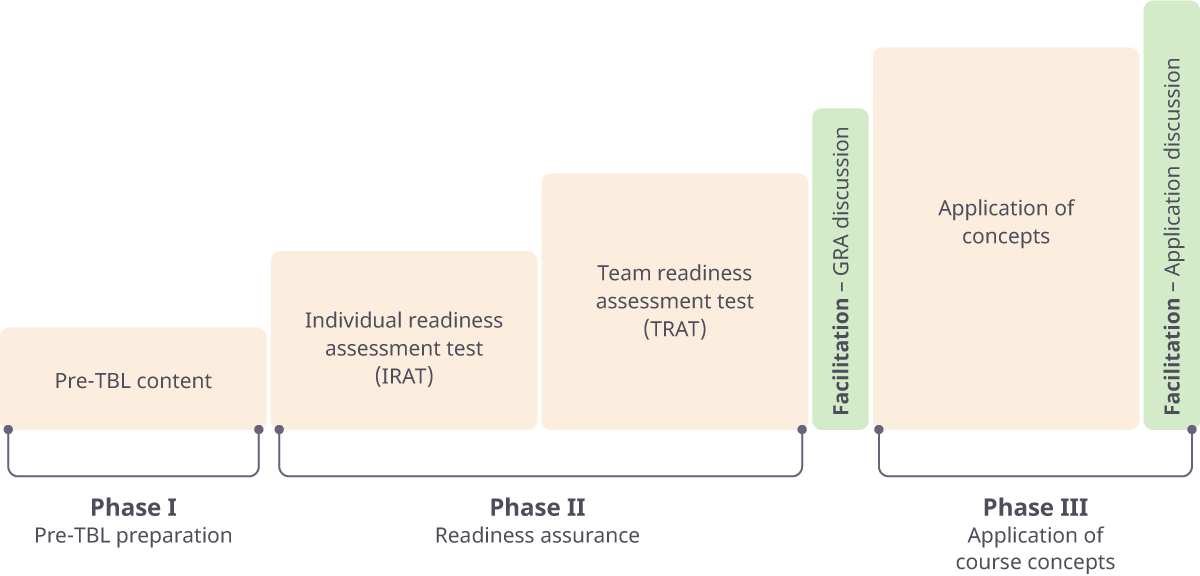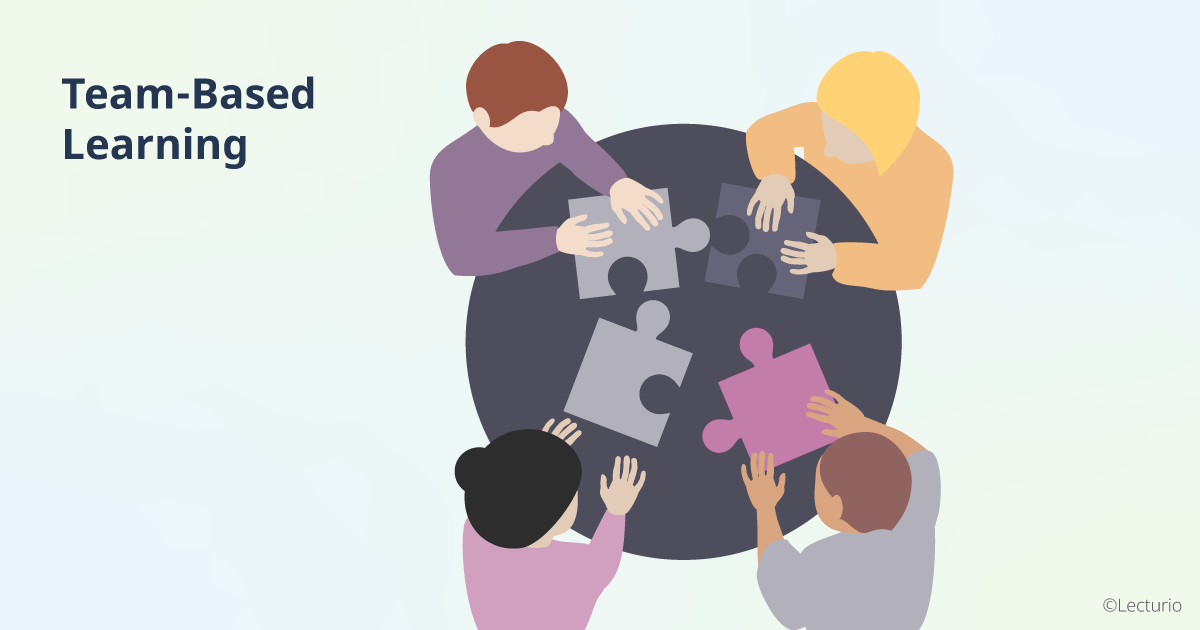What Is Team-Based Learning?
Team-based learning (TBL) is an instructional strategy that involves small groups engaged in collaboration and active learning. Students work together to solve problems, generate solutions, and/or complete tasks. TBL often incorporates problem-based learning, case-based learning, or other authentic, real-world problem solving.
Why Does it Work?
TBL is a form of collaborative learning. Collaboration helps learners build self-regulation skills and encourages social learning which can prepare learners for team-based care in the clinical setting and may help develop expertise (1). TBL often includes active learning tasks such as generation, elaboration, and reflection as learners generate potential solutions, elaborate by connecting new and old material, and reflect on their reasoning and solutions as well as their peers’ results. TBL gives instructors of large classes the opportunity to provide active learning experiences that may be otherwise difficult to manage with large groups (2). TBL also allows for team teaching, in which basic scientists and clinicians can work together to help students integrate basic sciences and clinical experiences (2).
Why Does Team Learning Work?
TBL is a form of collaborative learning. Collaboration helps learners build self-regulation skills and encourages social learning which can prepare learners for team-based care in the clinical setting and may help develop expertise (1). TBL often includes active learning tasks such as generation, elaboration, and reflection as learners generate potential solutions, elaborate by connecting new and old material, and reflect on their reasoning and solutions as well as their peers’ results.
TBL gives instructors of large classes the opportunity to provide active learning experiences that may be otherwise difficult to manage with large groups (2). TBL also allows for team teaching, in which basic scientists and clinicians can work together to help students integrate basic sciences and clinical experiences (2).
What is collaborative learning?
Collaborative learning is a teaching strategy that focuses on student groups (or students and teachers) working together to explore and understand course material (as opposed to only the educator presenting and explaining it).
What is team teaching?
Team teaching refers to educators working together to deliver instruction and information, combining different expertises or taking over varied roles in the classroom in parallel.
What is the main idea of social learning theory?
Social learning theory considers how the learning environment influences learning and behavior, investigating factors like learning through observation.
How to Apply Team-Based Learning in a Lesson Plan
Pre-reading and initial assessment
Pre-reading and prepared materials should be provided to students. Before class, students should be assessed on their readiness. Students should be assessed individually and may also be assessed for team readiness at the start of class, allowing the instructor to resolve any misconceptions or confusions.
Group learning
Students are divided into small groups, such as 4-6 students per group. Students must complete given tasks while the instructor acts as facilitator.
Feedback and discussions
Teams should present their results to each other with further discussion. The instructor should check for misunderstandings and encourage discussions, but should avoid giving any answers or solutions, only clarifying difficult concepts as needed.

Summary: practical implications for the classroom
- Prepare materials according to learning objectives and desired tasks.
- Have students prepare individually with pre-reading(6).
- Provide any necessary resources and materials for teams to perform their tasks.
- Prepare neutral and open-ended questions that will further discussion and thought among students (3).
- Students should clearly understand expectations and roles, if assigned.
- Consider using methods to ensure individual student accountability and group performance such as individual assessments, peer evaluations, and team performance assessments.
- Begin with an assessment to determine individual readiness as well as team readiness. Readiness assessments allow for clarification of basic concepts before the team assignment begins (3,6).
- Provide feedback as immediately as possible to inform students of their progress, clear up misconceptions, and help students identify any need for improvement (2,3).
TBL and Master Adaptive Learners
Master adaptive learners (MALs) are resilient, self-regulated learners who continue to learn and improve their skills and knowledge. MALs can use their skills to solve new problems and adapt to new situations and technologies. This flexibility helps them to keep learning and innovating throughout their career (4,5). Learning environments such as TBL can help promote curiosity, increase motivation, and help build a growth mindset and the resiliency needed for MALs to develop and thrive (4).
Webinar recording
In this online seminar on team-based learning, we covered how to develop master adaptive learners in the competency curriculum environment. Watch the recording here:





